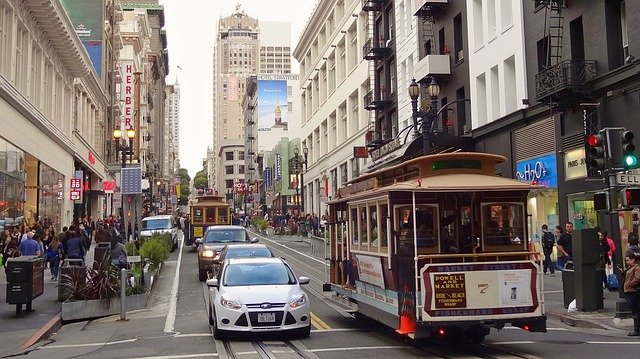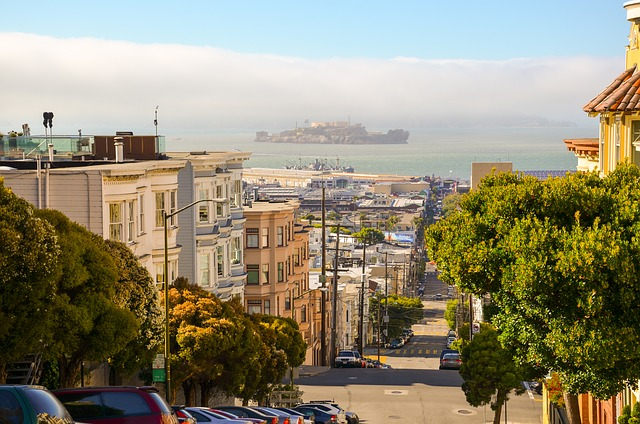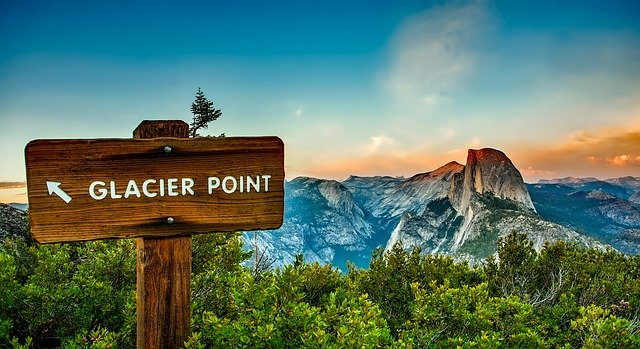A perfect Seattle to Yellowstone road trip takes you from the biggest city in the Pacific Northwest to the oldest National Park in the United States.
A 740+ mile Seattle to Yellowstone road trip takes you through Washington, Idaho, and Montana. As you drive, you will pass stunning National Parks and National Forests, incredible wildlife, remote cities, and historic towns, as you travel to one of the most breathtaking natural destinations on Earth, Yellowstone National Park.
For help planning the perfect Seattle to Yellowstone road trip itinerary, read on.
The Perfect Seattle To Yellowstone Road Trip: How Far Is It, How Long Will It Take, & What Is The Best Route?
A Seattle to Yellowstone road trip covers at least 740 miles and takes 11 hours to drive. The fastest route has you join I-90 at its origin and follow it 626 miles to Exit 256, in Cardwell, Montana. Join Montana Secondary Highway 359 where it begins, drive its 16-mile length, then turn right onto US Route 287 and head south to the Yellowstone National Park West Entrance.
However, the best route for a Seattle to Yellowstone road trip covers 825 miles and takes 13 hours to drive. This route begins by taking I-5 south to Exit 142A, before heading east on Washington State Route 18. Turn right onto Washington State Route 164 in Auburn, Washington, and drive its 15-mile length. Turn left onto Washington State Route 410 and follow it to its conclusion in Naches, Washington, where you merge onto US Route 12.
When you reach Yakima, Washington, go north on I-82 and follow it to its conclusion in Ellensburg, Washington. You’ll then merge onto I-90 and take it east 437 miles to Exit 174 in Garrison, Montana. Take US Route 12 east, then follow US Route 287 south from Townsend, Montana. Upon reaching Wheatland, Montana, rejoin I-90 and take it east to Exit 333 in Livingston, Montana.
You’ll then take US Route 89 south the rest of the way to the Yellowstone National Park Northwest Entrance in Gardiner, Montana.
Best Time For A Seattle To Yellowstone Road Trip
The best time for a Seattle to Yellowstone road trip is from the beginning of June to the end of August, as this is when the weather is warmest and every attraction will be open. July and August are the park's only “hot” months, so they are the best choice for those who prioritise hiking in the heat. However, they are also, by far, the busiest, so anyone happy with slightly cooler, yet still pleasant weather, should consider June or September.
Most of Yellowstone National Park will be open in May and October, making a road trip at these times possible. However, please be aware that closures may occur throughout the park, and the weather is quite cold. From early November to the end of April, most of the park (and certain parts of the “best” route) will be closed to regular vehicles, so this period is best avoided.
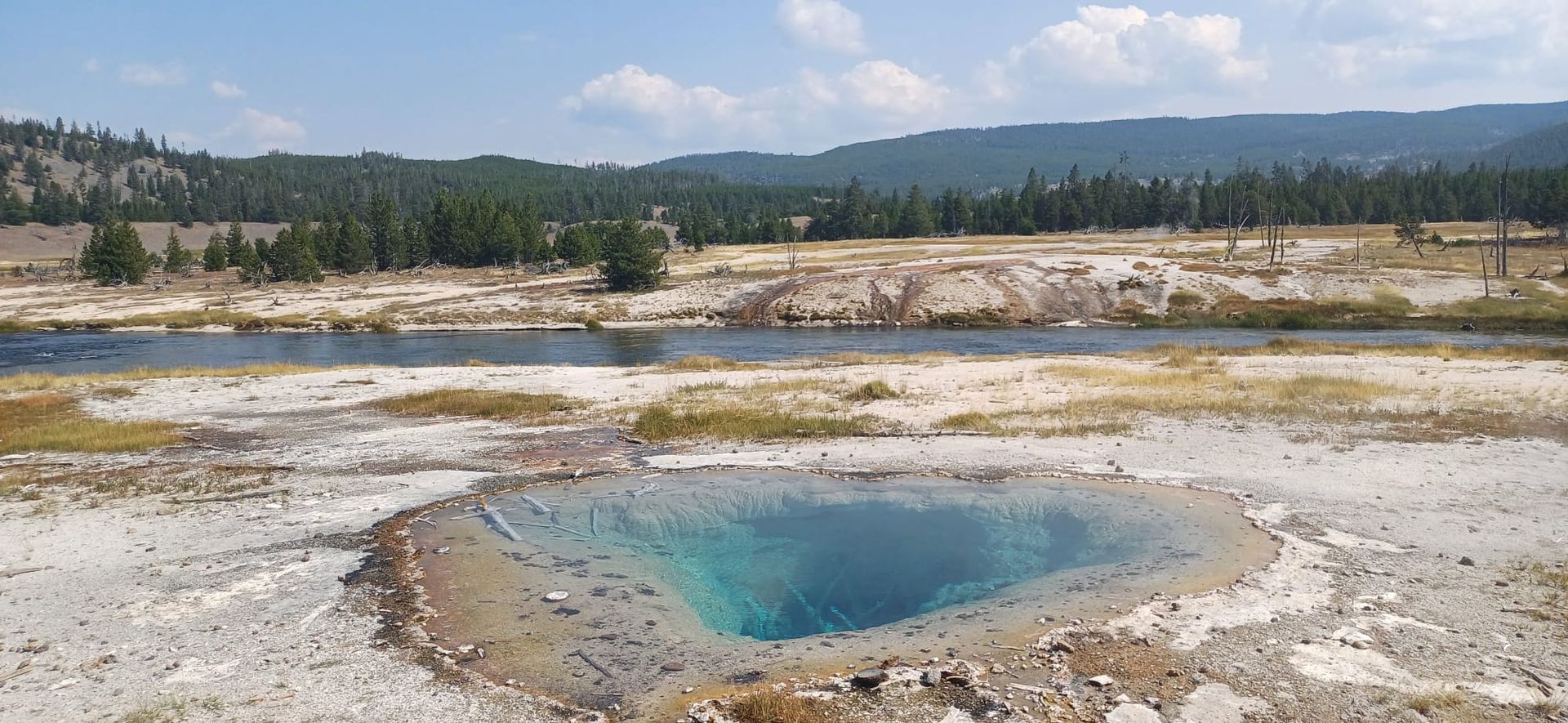
Best Place To Stop On A Seattle To Yellowstone Road Trip – Spokane, Washington
With a Seattle to Yellowstone road trip taking at least 11 hours to drive, you will need to break it into more manageable chunks. Of all the options available on either route, the best choice is easily Spokane, Washington. Located near the midpoint of our journey, on both routes, Spokane ranks 2nd in Washington in population and area, meaning it has an incredible amount to offer.
Spokane is a vibrant and welcoming city in the Inland Northwest. Famed for its mix of cultural attractions, scenic landscapes, and outdoor recreation, its centrepiece is Riverfront Park. With waterfalls, trails, a historic carousel, and seasonal events, it offers something for visitors of all ages. Its lively downtown has boutique shops, art galleries, craft breweries, and diverse dining options, while historic landmarks like the Fox Theater and the Davenport Hotel showcase the city’s rich heritage.
Outdoor enthusiasts can enjoy Spokane’s extensive parks and nearby natural areas, including the Centennial Trail for biking and walking along the Spokane River, and Riverside State Park’s hiking, boating, and wildlife viewing opportunities. In winter, nearby Mount Spokane provides skiing and snowboarding opportunities.
Best Hotel To Stay At In Spokane, Washington – The Davenport Grand, Autograph Collection
The Davenport Grand, Autograph Collection, is a modern, 4-star hotel in Downtown Spokane offering luxury accommodations with easy access to the city’s top attractions. Guests can enjoy spacious rooms with contemporary décor, floor-to-ceiling windows offering city or river views, and amenities including a flat-screen cable TV, privacy curtains, and an en-suite bathroom with a marble walk-in shower.
High-speed Wi-Fi is available throughout the property, which also features a rooftop bar with panoramic vistas, 3 on-site restaurants serving locally inspired cuisine, a fitness centre, an indoor pool, relaxing lounge areas, and convenient meeting and event spaces. Private parking and breakfast are also available.
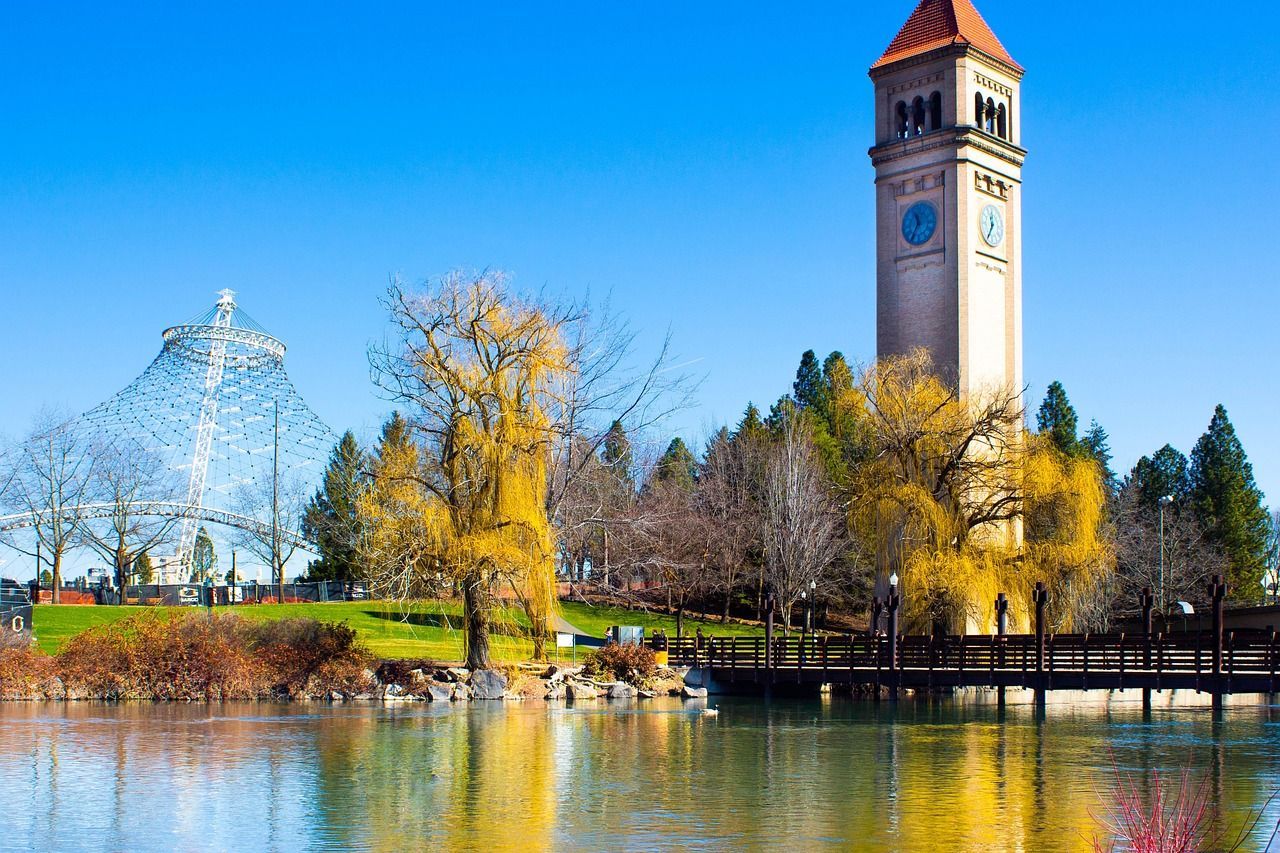
Top Attractions On The Perfect Seattle To Yellowstone Road Trip Itinerary
Tacoma, Washington (Best Route Only)
Washington’s third-largest and third most populous city, Tacoma, is renowned for housing the University of Washington Tacoma. A lively student city and a hub for culture enthusiasts, it boasts an array of impressive art galleries and museums.
Its extensive history has also garnered Tacoma the moniker of the “City of Destiny,” given that it was the western endpoint of the Northern Pacific Railroad, in addition to being the location of the largest port in Washington. Numerous sites throughout the city provide visitors with comprehensive insights into both of these significant historical sites.
Mount Rainier National Park (Best Route Only)
Mount Rainier National Park was established on March 2nd, 1899, making it the nation’s 4th oldest National Park, behind our destination and two of the three parks on California’s “Majestic Mountain Loop,” Sequoia and Yosemite. Its 236,382 acres make it the 30th largest in the country, while its 1,620,000 annual visitors are 19th.
Located in the Cascade Mountains, it focuses on a volcano encircled by scenery rich in waterfalls, meadows, and at least 27 significant glaciers. It serves as a site that provides two distinctly varying experiences, depending on the time of year.
During summer, the park bursts with beautiful wildflowers and teems with wildlife. Deer, goats, elk, bears, marmots, and more than 180 species of birds bring the park to life. At this time, activities such as camping, hiking, picnicking, and rock climbing enjoy huge popularity in Mount Rainier National Park.
In winter, substantial snowfall transforms the landscape into a snowy paradise. The most consistently measured location for snowfall on the planet, it’s an excellent option for winter sports and recreational activities, including skiing, tubing, snowshoeing, and simply discovering the winter wilderness.

Mount Baker-Snoqualmie National Forest (Fastest Route Only)
Mount Baker-Snoqualmie National Forest spans more than 2.5 million acres, making it the 14th largest National Forest in the U.S. and the 2nd largest in Washington, behind Okanogan-Wenatchee. Being founded on February 22nd, 1897, makes it the state’s oldest and the nation’s 12th oldest. Extending along the western slopes of the Cascade Range, it provides a stunning combination of alpine landscapes, glacial summits, and verdant old-growth forests.
The forest centres around Mount Baker, an active stratovolcano recognised for its striking snow-covered peak and premier skiing at the Mount Baker Ski Area. Guests can navigate a wide array of hiking paths, including trails through the North Cascades’ rugged wilderness and picturesque routes, such as the Mount Baker Highway, which presents sweeping views of mountains, valleys, and waterfalls.
Abundant in wildlife, Mount Baker-Snoqualmie National Forest offers a multitude of outdoor recreational activities throughout the year. Summer invites hiking, camping, fishing, and mountain biking, while winter alters the scenery into a haven for skiing, snowshoeing, and snowboarding. The Heather Meadows area is filled with wildflower meadows, and the Alpine Lakes Wilderness is ideal for backcountry excursions.
Turnbull National Wildlife Refuge
Turnbull National Wildlife Refuge is a tranquil sanctuary of wetlands, woodlands, and gently rolling prairies nestled in the Channelled Scablands, a region shaped by glacial floods during the Ice Age. It presents a remarkable variety of habitats that are home to a large population of moose year-round and draw more than 200 bird species, including great blue herons, trumpeter swans, and many types of waterfowl.
The refuge is particularly stunning in spring and autumn, when migratory birds inhabit the air, and wildflowers or fall hues adorn the scenery. Guests can enjoy picturesque drives and hikes on trails like the Pine Lake Loop and Stubblefield Lake Trail. These go past scenic viewing points, highlighting the refuge’s ponds and basalt formations, making it popular with birdwatchers, photographers, and nature enthusiasts. Informative displays at the visitor centre emphasise the refuge’s ecology and conservation efforts.

Idaho Panhandle National Forests
The Idaho Panhandle National Forests is a jointly administered reserve encompassing three national forests: Coeur d’Alene, Kaniksu, and St. Joe. Covering over 3 million acres of untouched wilderness in northern Idaho, eastern Washington, and western Montana, it is the nation’s 8th largest National Forest. It provides a breathtaking combination of mountains, lakes, rivers, thick evergreen forests, and plentiful wildlife, with moose, elk, eagles, and even grizzly bears inhabiting the region.
Visitors can enjoy scenic drives, camping, hiking, fishing, kayaking, swimming, mountain biking, horseback riding, and boating amid landscapes transitioning from the shimmering waters of Lake Pend Oreille, Priest Lake, and the St. Joe River, to the rugged summits of the Selkirk and Bitterroot ranges and trails like the Route of the Hiawatha. Winter presents chances for skiing, snowshoeing, snowmobiling, and other winter sports.
Wallace, Idaho
Wallace, Idaho, is a delightful historic mining town encircled by the Silver Valley’s picturesque Bitterroot Mountains. Dubbed the “Silver Capital of the World,” Wallace maintains much of its 19th-century charm, featuring brick structures, antique storefronts, and a pedestrian-friendly downtown that is entirely listed on the National Register of Historic Places.
Tourists can delve into the town’s mining legacy at the Sierra Silver Mine Tour, the Northern Pacific Railroad Museum, and the Oasis Bordello Museum, which provides an eccentric look into Wallace’s vibrant history.
Lolo National Forest
Montana’s Lolo National Forest encompasses over two million acres of mountains, rivers, and woodlands that embody the wild allure of the Northern Rockies. Renowned for varied landscapes, including verdant valleys, towering alpine ridges, mountain vistas, flowing rivers, and serene woodlands, visitors may encounter wildlife such as elk, deer, and black bears.
Providing innumerable opportunities for hiking, camping, fishing, kayaking, and wildlife observation, its most popular attractions include sections of the historic Lewis and Clark Trail, paths like those in the Rattlesnake Wilderness and the Lolo Peak area, and the Lolo Hot Springs, where you can enjoy a soothing soak after outdoor activities. During winter, Lolo transforms into a haven for snowshoeing, cross-country skiing, and snowmobiling.
Missoula, Montana
Missoula is the 2nd most populous and 4th largest city in Montana. Commonly referred to as the "Garden City," the city offers a lively fusion of mountain exploration, cultural allure, and relaxed college-town ambience, and is encircled by five mountain ranges and situated along the Clark Fork River. Its breathtaking landscapes offer a multitude of outdoor pursuits, including floating or kayaking through downtown, and hiking the renowned "M" Trail on Mount Sentinel for sweeping vistas.
The city's vibrant downtown area is home to local breweries, art galleries, unique shops, and historical architecture, all set against a backdrop of rugged mountains and the University of Montana. Farmers' markets, live music venues, and annual events, such as the River City Roots Festival, unite the community in a celebration of local culture. Visitors can discover regional history at the Historical Museum at Fort Missoula or enjoy a performance at the historic Wilma Theatre.
Helena, Montana (Best Route Only)
Helena, the capital of Montana, is encircled by mountains and lakes, combining a rich Gold Rush heritage with the allure of the Northern Rockies. Established during the 1860s gold rush, Helena exhibits its frontier history through impressive Victorian architecture, historic residences, and notable sites, including the Montana State Capitol and the Cathedral of St. Helena.
Tourists can wander through the Last Chance Gulch pedestrian mall, the location of the city’s initial gold discovery, to experience unique shops, art galleries, and inviting cafés. The nearby Montana Historical Society Museum provides an outstanding overview of the state’s vibrant history, and the picturesque Mount Helena City Park provides a fulfilling hike with panoramic views of the valley.
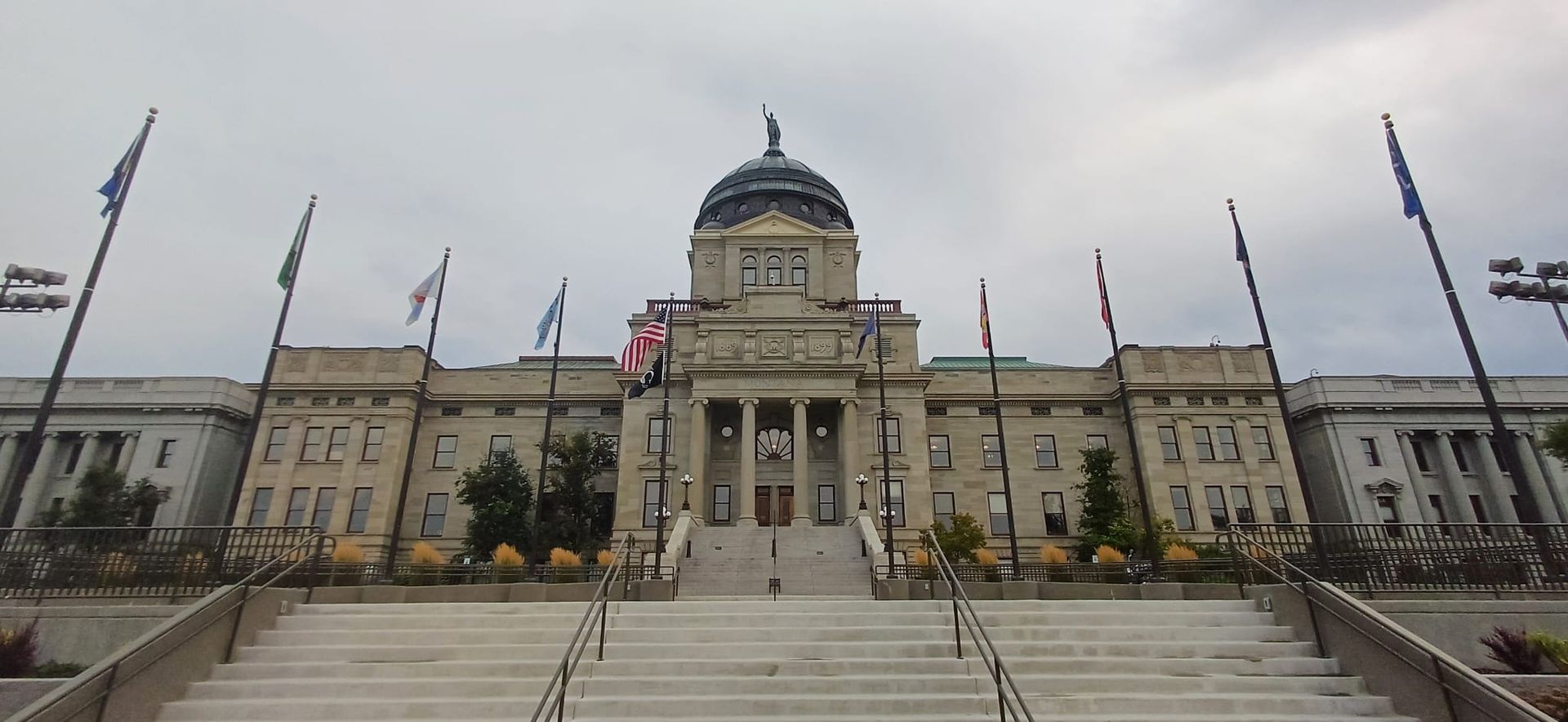
Helena-Lewis & Clark National Forest (Best Route Only)
Helena–Lewis & Clark National Forest spans almost 2 million acres and offers visitors a striking mix of rugged mountains, open plains, and pristine wilderness. Named after the State Capitol and the legendary explorers, it follows parts of the Lewis and Clark Expedition’s route. Stretching from the Continental Divide near Helena to the sweeping grasslands east of Great Falls, it showcases the diverse beauty of Montana’s landscapes.
Popular areas include the Kings Hill Scenic Byway and the Big Belt and Little Belt Mountains, with their scenic trails, alpine lakes, and breathtaking mountain views. The forest also holds deep historical significance and is alive with historical landmarks and opportunities for camping, hiking, biking, boating, swimming, wildlife viewing, fly fishing, picnicking, and even snowshoeing and skiing in the winter months.
Butte, Montana (Fastest Route Only)
The 2nd largest and 5th most populous city in Montana, Butte was once among the wealthiest mining towns in the American West. Established during the late 19th-century copper rush, Butte’s historic uptown area is populated with preserved brick structures, classic saloons, and decorative mansions that narrate the tale of its thriving past. Tourists can visit the World Museum of Mining, take a tour at the Berkeley Pit overlook to view the extensive open-pit mine, or enjoy the Trolley Tour for an insightful glimpse into the city’s vibrant history.
Butte’s Irish roots remain robust, commemorated every March with one of the largest St. Patrick’s Day celebrations in the nation. During the summer, the Montana Folk Festival brings live music and cultural events to the city’s streets and hills. Nestled among the Rocky Mountains, Butte’s captivating blend of industrial heritage, rugged charm, and mountainous beauty provides convenient access to outdoor activities, with hiking, biking, and fishing options in the adjacent Beaverhead–Deerlodge National Forest.
Bozeman, Montana (Best Route Only)
The state’s 4th most populous and 6th largest city, Bozeman, Montana, is a dynamic mountain community that combines outdoor exploration with contemporary Western culture. Enveloped by the Gallatin, Bridger, and Madison mountain ranges, Bozeman serves as an entrance to some of Montana’s most breathtaking landscapes, including Hyalite Canyon, Bridger Bowl Ski Area, and the Gallatin River, providing opportunities for hiking, skiing, fishing, and nature watching throughout the year.
The city’s historic downtown showcases delightful brick structures, unique shops, art galleries, and exceptional farm-to-table dining options. It boasts a vibrant cultural and educational landscape, as the site of Montana State University and the renowned Museum of the Rockies, which contains one of the finest dinosaur fossil collections worldwide. Festivals, live performances, and local markets infuse the city with a youthful, vibrant atmosphere while preserving its Western appeal. It is also extremely popular with fans of the Yellowstone TV show, as many of its scenes were set and filmed here.
Custer Gallatin National Forest (Best Route Only)
Custer Gallatin National Forest is a nearly 2 million-acre playground of mountains, valleys, rivers, and woodlands that merges the historical regions of Custer and Gallatin. Visitors can explore the Absaroka and Beartooth Mountains, alpine meadows, and unspoiled waterways, traverse picturesque trails, fish in trout-laden rivers and streams, camp beneath starlit skies, and investigate the numerous lakes within the forest.
Famous routes like the Beartooth Highway offer stunning panoramic vistas, and it is abundant in wildlife, with elk, bighorn sheep, deer, and bears frequently seen by visitors. During winter, the area transforms into a paradise for skiing, snowboarding, and snowmobiling, especially around Big Sky and Bridger Bowl.
Gardiner, Montana (Best Route Only)
Gardiner, Montana, is a quaint gateway town at Yellowstone National Park’s northern entrance. Enclosed by the picturesque Yellowstone River and majestic mountains, visitors to Gardiner can explore historic streets and local boutiques, and enjoy riverside dining and views of the iconic Roosevelt Arch at the park's entrance.
Rafting and fishing excursions on the Yellowstone River are popular during the summer, while nearby trails and forests offer hiking and wildlife observation. In winter, the region is more tranquil yet still stunning, with landscapes blanketed in snow and a serene atmosphere. You will also find a great range of gift shops with far more reasonable prices than those within Yellowstone National Park.
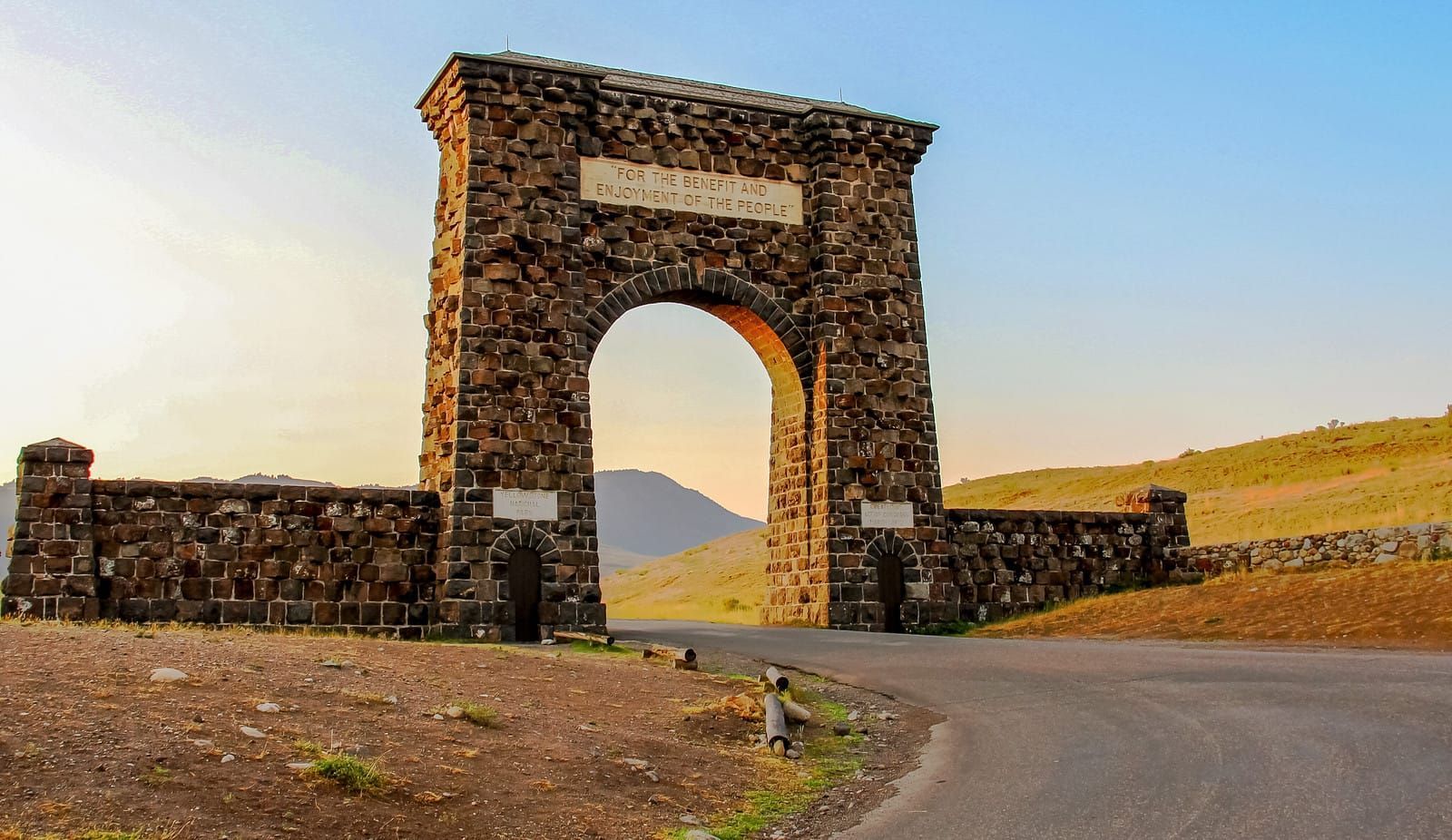
West Yellowstone, Montana (Fastest Route Only)
West Yellowstone, Montana, is located at the western entrance of Yellowstone National Park. Serving as a vibrant hub for visitors, it boasts a variety of lodging, dining, reasonably priced gift shops, and other retail outlets, making it a practical base for tourists.
West Yellowstone itself is also a year-round location for outdoor activities. During summer, guests can enjoy hiking, mountain biking, and fly fishing, while winter transforms the region into a snowy playground ideal for snowmobiling, cross-country skiing, and dogsledding. The Grizzly & Wolf Discovery Center offers an informative and family-oriented way to learn about local wildlife.
Final Thoughts On The Perfect Seattle To Yellowstone Road Trip Itinerary
This concludes our guide to planning the perfect Seattle to Yellowstone road trip itinerary. You should’ve now decided when to travel, which route to use, where to stay, and what to see on the drive. We also have a Yellowstone National Park guide to help plan your time in the park, which you can read here.
All that’s left is to decide what to take with you, and then you can start booking and budgeting everything, so you can look forward to enjoying it all for yourself as soon as possible. Anyone looking to continue their journey may also appreciate our guide to a road trip from Yellowstone to Grand Canyon, which can be read here.
